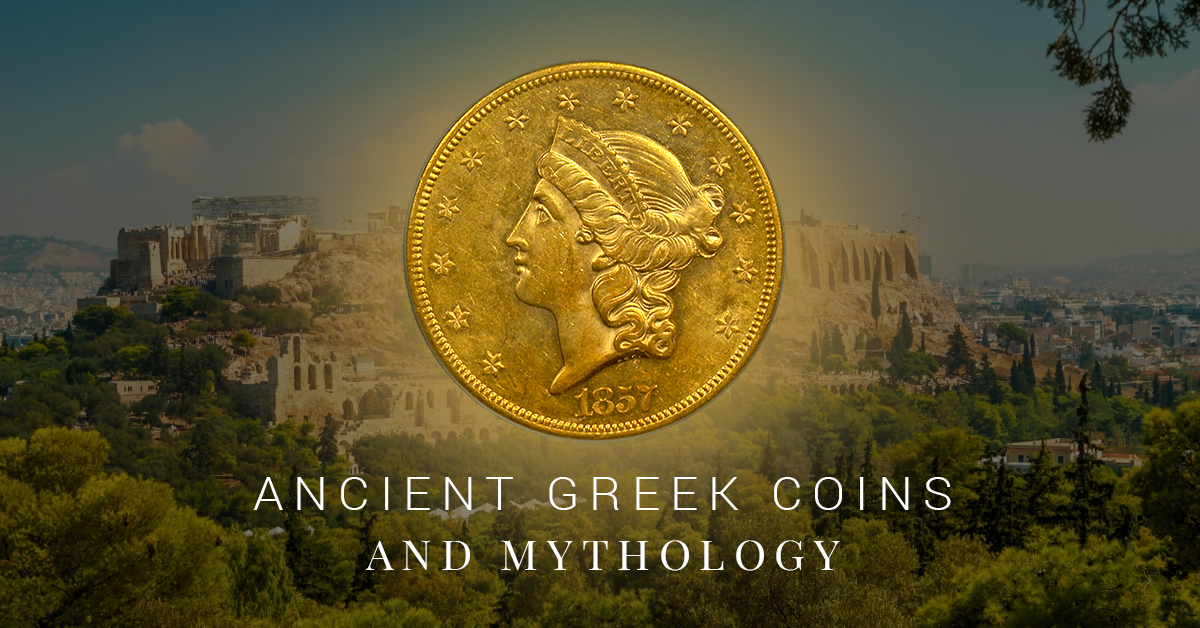Ancient Greek Coins and Mythology

We sometimes forget, but in many ways, the ways that really matter, the people of the ancient world were just like us. Ancient Greece was no different. They did a variety of jobs, spent important time with their families, and worshipped their large pantheon of gods. One of the ways the Greeks paid tribute to their deities was by portraying their images on money. Since the use of currency is so commonplace, the image of a particular god might encourage the holder of the money to take a moment and reflect upon more heavenly matters.
Before its unification, Greece was a collection of city-states. Each one had its own local government and coinage. When the coin designs were carved, the artisans depicted local culture, famous areas, and the particular deity that was thought to protect the area. Read on as we examine the depiction of gods and mythology upon ancient Greek coins.
-
Corinth celebrated the hero Bellerophon. Arguably his most famous feat was his capture of the winged stallion Pegasus. The feathered horse was spotted drinking out of the Peirene fountain, found just outside the city. The goddess of wisdom, Athena, granted Bellerophon a golden bridle. The hero used it to tame Pegasus and make the horse his mount.
-
In Knossos, coins were cast with a design of the famous Labyrinth, which was built by the genius Daedalus. At the center of the maze lived the forbidding minotaur, a creature with the body of a man and the head of a bull. The beast slaughtered scores of people, but the hero Theseus volunteered to slay it. He successfully defeated it, securing his own place and that of the Labyrinth in myth.
-
Nemea’s coins became well-known because of their depiction of the demigod Heracles doing battle with the Lion of Nemea. As the first of his 12 labors, Heracles was commanded to slay the Nemean Lion by King Eurystheus. The creature, who terrorized the area, had fur that made it impervious to attack, and its claws had the ability to slice through armor. Heracles eventually found the beast and engaged it. He discovered that his arrows and sword had no effect on it. Eventually, he stunned the Lion with his club and strangled it with his enormous strength. Heracles skinned the Lion with its own claws and fashioned the pelt into a cloak.
-
Chalkidiki was one of the city-states patronized by Apollo, the god of music, prophecy, truth, the sun, and much more. The messenger god Hermes constructed the lyre for Apollo, a stringed instrument, and the lyre began appearing on the coins of Chalkidiki. Just like the religious folk of today, Apollo’s worshippers sung hymns to and about Apollo, and his hymns were known as paeans.
- Athens was named in honor of the goddess of battle and wisdom, Athena. She sprung, fully formed, from the skull of her father, Zeus. She was also a goddess of justice, law, and civilization, which might explain why her worshippers were the ones to devise democracy. Her coin usually depicts her face on one side, and a carving of an owl on the other.







